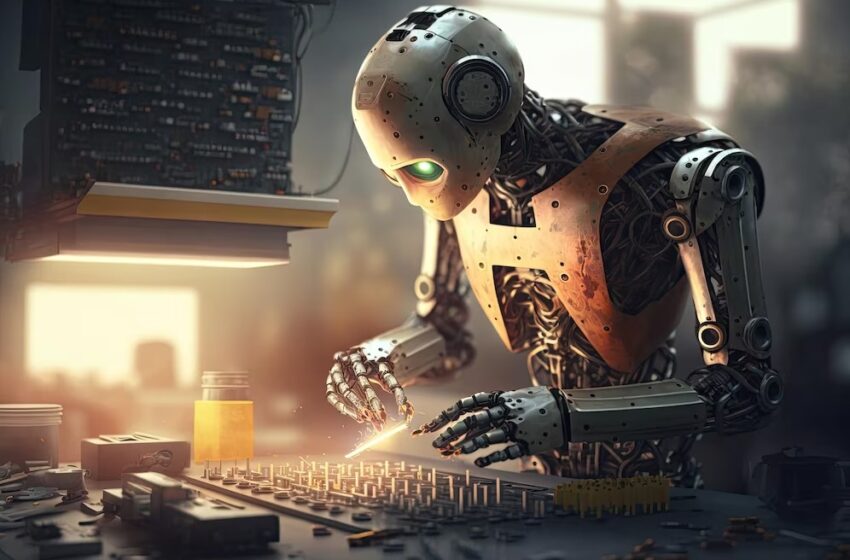The Impact of AI on Traditional Crafting and Design Industries

The integration of Artificial Intelligence (AI) into various sectors has sparked a revolution, not least within the realms of traditional crafting and design industries. This fusion of technology and creativity is redefining the boundaries of what’s possible, offering new opportunities while also presenting unique challenges. This blog explores how AI is impacting these age-old practices, from enhancing design processes to creating entirely new forms of art.
Enhancing Creativity and Efficiency
AI’s role in traditional crafting and design industries primarily revolves around enhancing creativity and operational efficiency, enabling artists and designers to achieve results that were previously unimaginable.
AI-Driven Design Tools:
- Automated Pattern Generation: AI algorithms can create intricate patterns and designs, providing a vast array of options for textiles, ceramics, and other craft items.
- Color and Texture Suggestions: AI systems analyze designs and suggest color schemes and textures, enhancing the aesthetic appeal of the final product.
Streamlining Production:
- Precision Crafting: In industries like jewelry making or woodworking, AI-powered tools ensure precision in cuts and engravings, reducing waste and improving quality.
- Time Efficiency: AI accelerates the design process, from conceptualization to execution, allowing creators to focus more on the creative aspect rather than time-consuming manual tasks.
Personalization at Scale
One of the most significant impacts of AI on traditional crafting and design is the ability to offer personalized products at a scale previously unattainable without compromising the artisanal value.
Key Highlights:
- Customized Designs: AI algorithms can tailor designs based on individual preferences, ensuring each piece is unique and personal.
- Consumer Engagement: Interactive AI platforms allow customers to be part of the design process, enhancing their overall experience and satisfaction.
Bridging Tradition and Technology
The integration of AI in traditional crafts and design is not about replacing human skills but rather augmenting them, bridging the gap between age-old techniques and modern technology.
Preservation of Traditional Crafts:
- Digital Archiving: AI helps in documenting and preserving traditional designs and techniques, ensuring they are not lost to time.
- Skill Enhancement: AI tools provide craftsmen with new ways to explore their craft, potentially leading to the revival of fading art forms.
Challenges and Ethical Considerations
While the benefits are manifold, the adoption of AI in traditional crafting and design industries also brings forth several challenges and ethical considerations.
Loss of Human Touch:
- Authenticity Concerns: There’s a debate on whether AI-generated art lacks the authenticity and emotional depth of human-created works.
- Skill Displacement: There’s a fear that AI might displace traditional skills, leading to a loss of craftsmanship passed down through generations.
Intellectual Property Issues:
- Ownership and Copyright: Determining the ownership of AI-generated designs can be complicated, raising questions about intellectual property rights.
Future Outlook and Opportunities
As we look to the future, AI’s role in traditional crafting and design industries is set to expand, offering exciting opportunities for innovation and growth.
Collaborative Creativity:
- Human-AI Collaboration: Future advancements will likely focus on collaborative platforms where human creativity and AI efficiency work in tandem, leading to groundbreaking works of art and design.
- Educational Tools: AI can serve as an educational tool, teaching traditional techniques to new generations and ensuring the survival and evolution of crafts.
Expanding Market Reach:
- Global Exposure: AI-powered platforms can connect local artisans with a global marketplace, expanding their reach and introducing traditional crafts to new audiences.
Conclusion
The impact of AI on traditional crafting and design industries is profound, offering a blend of opportunities to innovate while also presenting challenges that need to be navigated carefully. By enhancing creativity, personalizing products, and bridging tradition with technology, AI is setting the stage for a renaissance in these industries. However, it’s crucial to approach this integration with sensitivity towards preserving the authenticity and heritage of traditional crafts. As we move forward, the focus should be on leveraging AI as a tool that complements human skill and creativity, ensuring that the heart and soul of traditional crafts are not only preserved but also celebrated in the digital age.
(Nominate Now: Join us to spotlight your achievements! Be part of the elite in the business and finance community. Exciting opportunities await!)








